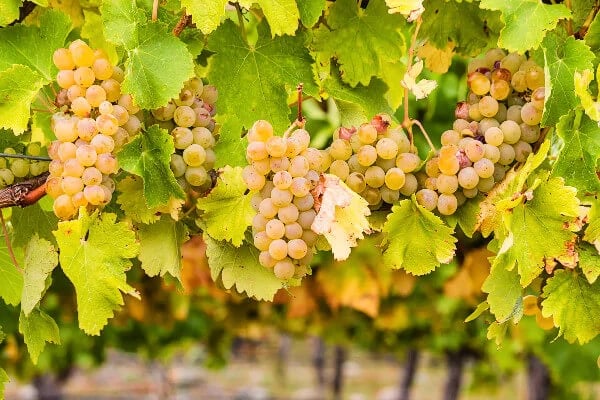
Appellations of Languedoc, a Quick Guide
If you want delicious wine without spending a lot of money, there’s one place that never fails: the Languedoc.
This vast region of Southern France which stretches from Provence to the border with Spain produces more wine than Australia. It’s best known for its sturdy reds made from varieties that will be familiar to lovers of Southern Rhone wines but there’s far more to the Languedoc than that. So here’s a crash course in its AOC (Appellation d'Origine Contrôlée) wines.
AOC Languedoc
Formerly known as Coteaux du Languedoc, it’s hard to generalise about this diverse region which includes communes all over the Hérault and Aude departments. A good way to think of it is like Côtes du Rhône, and like Côtes du Rhône it has various crus some of which have gone on to become separate appellations like Pic-St. Loup, famous for its reds, and Picpoul de Pinet (see below). AOC Languedoc terroir ranges from schist in the mountains to gravelly chalk closer to the coast.
Reds tend to be full-bodied, often with a notable ‘garrigue’ herbal character. In the ‘80s and 90’s there was a push to plant ‘improving’ varieties like Syrah, Grenache, and Mourvedre. But as in the rest of the Languedoc, there’s a growing appreciation of previously maligned grapes like Carignan and Cinsault. Pinks use the same varieties, largely, and these days tend to be made in a pale Provence style. White grapes permitted include Grenache Blanc, Clairette, Bourboulenc, Marsanne, Roussanne, Viogner, Vermentino, and more.
Grés de Montpellier
 Detail on a Grés de Montpellier bottle
Detail on a Grés de Montpellier bottle
This gained its own AOC in 2023. Congratulations Grès de Montpellier! As its name suggests, its vineyards are located in the hills around near the city of Montpellier. It covers about 4,600 hectares in stony soils. It’s a red wine only appellation with Syrah, Grenache and Mourvèdre as principal varieties and Cinsault, Carignan and Morrastel (better known as Graciano in Rioja) in support.
Faugères
This is one of the oldest AOCs in the Languedoc dating back to 1982. It’s a homogeneous region with entirely schist soils located in the Hérault department not far from the city of Beziers. Whites and rosés are allowed under appellation rules. However, around 80% of the production is red made from the usual mix of grapes outlined above. Though there are two co-ops, unusually for this part of France, private producers predominate. The reds from Faugeres often have a freshness that lifts them above the Languedoc norm. Quality is uniformly high.
Saint-Chinian
A sister region to Faugeres with some parts sharing similar schist soil whereas others have sandstone or a mixture of sandstone and clay. As with its neigbour it gained its appellation status in 1982. Reds mainly are made here, the best being the equal of Faugeres, though it's more dominated by co-ops. There are two subregions Saint-Chinian-Berlou and Saint-Chinian-Roquebrun and a small amount of white is also made largely from Grenache Blanc and other varieties.
Terrasses du Larzac
This was part of AOC Languedoc until 2005 when it gained its own appellation. This is a big red wine only region in the Hérault department with a mixture of sandy, shingle and limestone soils. It contains a number of sub-regions some of which produce wines of extremely high quality like Montpeyroux and Saint Saturnin. What unites the various terroirs is an emphasis on altitude. Consequently the vineyards tend to be cool at night even at the height of the summer adding a freshness to the wine.
Picpoul de Pinet
 Distinctive Picpoul de Pinet "Neptune" bottle
Distinctive Picpoul de Pinet "Neptune" bottle
Originally the Piquepoul (for some reason the grape is spelt differently from the appellation) grape was planted in Étang de Thau basin to make wine to go into Noilly Prat. When the vermouth market declined in the 1970s and ‘80s, the various co-ops and private producers invested in high tech winemaking which brought out the zingy character of the local grape which turned out to have a peculiar affinity with oysters, the other great speciality of the region. A modern classic was born.
Picpoul de Pinet became an AOP under Coteaux du Languedoc in 1985 and then gained its own appellation in 2013. The appellation is currently white wine only, though some non-AOC rosé wines are made. A premium category called ‘Patience’ was launched in 2018, the wines left longer on the lees and designed to have ageing potential.
Corbieres
A vast appellation for red, white and rosé, the largest in the Languedoc, located in the west of near the cities of Carcassonne and Narbonne. The soil is very varied with sandstone predominating in the north and chalk closer to the sea. It was made an appellation in 1985. There used to be a sub-region of Corbieres-Boutenac which gained its own AOP in 2024. As you’d expect from such a large region, quality is variable, but the best reds are sturdy and full of flavour while the whites and rosés are fast improving.
Minervois
Minervois, named for the Roman goddess of wisdom Minerva, had a reputation in ancient times and from the Middle Ages until the 19th century. Following a period as a bulk wine region, it is once again on the up and became an AOP in 1985. The soils range from chalk and pebble on lower ground with granite and sandstone at higher altitude. While all three colours are made here, it’s red that predominates. Minervois has picked up a reputation as one of the most consistent appellations in the Languedoc. Wines tend to be powerful with high alcohol but usually well-balanced too.
The high quality sub-appellation Minervois La Liviniere has become a byword for even higher quality and is in the process of gaining its own AOP.
Limoux
 Pont Neuf Limoux
Pont Neuf Limoux
The high altitude Limoux region is something of an outlier in the Languedoc as its speciality is sparkling wines, Chardonnay and Pinot Noir. The town of Limoux sits just to the south of Carcassonne along the River Aube at altitudes that ranges from 200-400 metres above sea level making this distinctly cooler than nearby Corbieres.
Locals claim that their fizz dates back to 1531, long before sparkling wines were made in Champagne. Traditionally Blanquette de Limoux (which gots its own AOP way back in 1938) is made from the local variety Mauzac, the wine is bottled in the winter and then referments in the summer producing a lightly sparkling off-dry wine.
Nowadays some producers use the Champagne method instead which can contain up to ten per cent Chardonnay and or Chenin. There’s also a Cremant de Limoux made using 60 per cent Mauzac plus Chardonnay and Chenin which is closer to Crémant de Bourgogne.
Finally the region produces some Chardonnay (often oak-aged) and Pinot Noir labelled as Limoux which make extremely good budget Burgundy alternatives.




